July 1
“Had the advance on Cemetery Hill been pushed forward promptly that afternoon we now know beyond any possible question that the hill was feebly occupied and could have been easily taken, and Meade would have been forced to retreat.”
~Lt. Randolph H. McKim
2nd Maryland Infantry
On the other hand…
“In my opinion, an attack at that time, with the troops then at hand, would have been hazardous and of very doubtful success.”
Col. Armistead Lindsay Long
(Gen. Robert E. Lee’s military advisor)
Army of Northern Virginia

1863 – The Battle of Gettysburg: Day 1 …
At 5:00 a.m., Confederate Major General Henry Heth’s Division set out for Gettysburg from Cashtown. To the west of town, Union Brig. General John Buford’s Cavalry Division sat with 2,700 troops.
At 7:30 a.m., Lieutenant Marcellus Jones of the 8th Illinois Volunteer Cavalry fired the first shot at the Battle of Gettysburg. Skirmishing ensued as Buford’s troops held out stubbornly, though seriously outnumbered. By 9:30, Heth finally had his men into position to attack.
At 9:45, Union General John Reynolds’ I Corps arrived on the scene to reinforce Buford’s Division against increasing pressure from the advancing Confederates.
Within 45 minutes, as Reynolds was supervising the placement of the 2nd Wisconsin (“Forward men! For God’s sake, forward!”), he was struck by a bullet to the head and was killed instantly.
Confederate Army Gen. Robert E. Lee arrived in Gettysburg mid-afternoon. By then, Union forces were on the retreat through the town of Gettysburg, regrouping at Cemetery Hill (the north end of Cemetery Ridge).
The first troops on the hill were those of General O.O. Howard’s Eleventh Corps, who arrived on the battlefield around noon. Later that afternoon, General Winfield Scott Hancock, sent to the battlefield by General Meade, re-organized the intermingled regiments after the fighting west and north of town.
As to the choice of Gettysburg as the battlefield, Hancock told Howard “I think this the strongest position by nature upon which to fight a battle that I ever saw.”
When Howard agreed, Hancock concluded the discussion: “Very well, sir, I select this as the battlefield.”
Lee ordered Confederate Gen. R.S. Ewell to attack Cemetery Hill (“if practicable”), but Ewell made the fateful – and long debated – decision to forego the attack, giving Union troops time to bring in reinforcements and set up artillery.
By dusk, the Union defensive line extended from Cemetery Hill all along Cemetery Ridge to the hill known as Little Round Top. Three more Union corps arrived overnight to strengthen its defenses.
The story continues tomorrow.
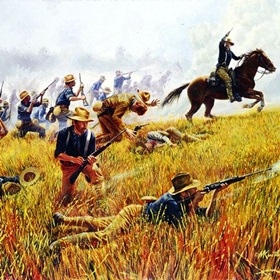
1898 – Theodore Roosevelt and his “Rough Riders” waged a victorious assault on San Juan Hill in Cuba during the Spanish-American War.
The fight for the heights was the bloodiest and most famous battle of the war. It was also the location of the greatest victory for the Rough Riders, as claimed by the press and its new commander, Roosevelt – who had Richard Harding Davis, his personal publicist, alongside him.
But there were other heroes, rarely mentioned when San Juan Hill is discussed.
The Rough Riders (officially known as the First U.S. Voluntary Cavalry) and the “Buffalo Soldiers” (black soldiers of the 9th and 10th Cavalry regiments) were the first up Kettle Hill.
Roosevelt attempted to lead an attack against San Juan Hill but was followed by only five men. Returning to his lines, he met with Brigadier General Samuel Sumner and was advised to take a less steep route.
The troops, along with the “Buffalo Soldiers” broke through lines of barbed wire and headed up the northern extension of San Juan Hill. By then the fighting was over at the top of the heights.
From the crest, the Americans found themselves overlooking Santiago, and the next day they began a siege of the city.
One often overlooked hero was Lt. John Henry Parker.
During the battle, Parker’s Gatling guns fired approximately 18,000 rounds in eight and a half minutes (over 700 rounds per minute of continuous fire) into the Spanish defensive lines atop the heights.
The best-known image of the Spanish-American War is that of Teddy Roosevelt on horseback charging with his Rough Riders up San Juan Hill. The reality is he abandoned his horse at a barbed wire fence 40 yards from the summit and ran alongside his orderly toward a fortified house.
The prevailing theory then – and even now – is the victory belonged primarily to Roosevelt.
It did not, nor did it belong mainly to the Buffalo Soldiers.
It belonged to all of them.
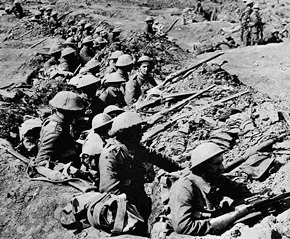
1916 – After a week of prolonged artillery bombardment, 11 divisions of the British Fourth Army and 5 divisions of the French Sixth Army began an attack on German forces north of the River Somme in France.
It became the bloodiest day in the history of the British Army and one of the most infamous days of World War One.
Allied and German troops faced each other’s trenches separated by a few hundred yards of “no-man’s land”. British generals staged a massive artillery bombardment and sent 100,000 men over the top to take the German trenches. The question that remained was whether the troops could cross no-man’s-land before the barrage lifted.
It was a race with death.
British soldiers were cut down by the thousands by machine gun and artillery fire. In one day, 19,240 British soldiers lost their lives and another 40,000 were wounded. 1,600 French soldiers died.
The Battle of the Somme continued for another 140 days. More than three million men fought in this battle and one million men were wounded or killed, making it one of the bloodiest battles in human history.
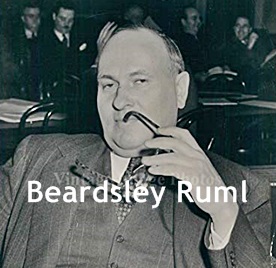
1943 – “Pay-as-you-go” income tax withholding began.
Before 1940, only seven percent of Americans paid income tax.
Fighting in World War II had become extremely expensive for the nation. The Revenue Act of 1942 had increased taxes on all incomes and lowered personal exemptions.
The changes pushed 13 million more people into the tax system. Originally the tax system had citizens paying taxes only at the end of the year, but polls showed that few Americans now subject to the tax for the first time were saving to make their payment.
With a March 15 tax deadline looming (not April 15 as it is now), the Treasury Department worried about the prospect of massive tax evasion. To the rescue came Beardsley Ruml, an executive for R.H. Macy & Co. and an advisor to President Franklin D. Roosevelt.
At Macy’s Ruml had observed that customers didn’t like big bills. They preferred making payments bit by bit, even if they had to pay interest to do so.
So Ruml devised a pay-as-you-go plan for taxpayers whereby employers would retain a percentage of taxes from every paycheck and forward it directly to Washington’s war chest. Withholding, as we know it today, was born.
1963 – The Beatles recorded She Loves You at Abbey Road’s Studio 2.
The song with which Beatlemania truly began, She Loves You was released in England as a single on August 23 and it remains their best-selling single in the UK.
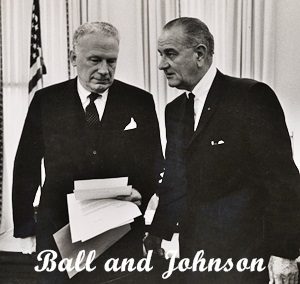
1965 – Under Secretary of State George Ball submitted a memo to President Lyndon Johnson.
Titled A Compromise Solution for South Vietnam, it was blunt.
“The South Vietnamese are losing the war to the Viet Cong. No one can assure you that we can beat the Viet Cong, or even force them to the conference table on our terms, no matter how many hundred thousand white, foreign (U.S.) troops we deploy.”
Ball advised that the United States not commit any more troops, restrict the combat role of those already in place, and seek to negotiate a way out of the war.
Secretary of Defense Robert McNamara dismissed Ball’s negotiated settlement plan. He urged the president to “expand promptly and substantially” the U.S. military presence in South Vietnam. There were less than ten U.S. Army and Marine battalions in South Vietnam at the time.
Johnson ultimately accepted McNamara’s recommendation. Three weeks later, he authorized a total of 44 U.S. battalions for commitment in South Vietnam, a decision that led to a massive escalation of the war.
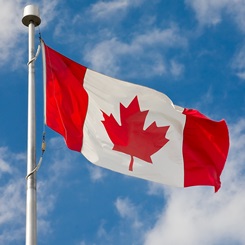
1980 – O Canada officially became the national anthem of Canada.
had served as a de facto national anthem since 1939, officially becoming the country’s national anthem in 1980 when Canada’s National Anthem Act became effective as part of that year’s Dominion Day (now known as Canada Day) celebrations.
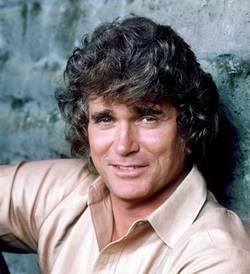
1991 – Actor Michael Landon died of pancreatic cancer at the age of 54.
He was a constant on NBC for thirty consecutive years in his roles as Little Joe Cartwright in Bonanza (1959–1973), Charles Ingalls in Little House on the Prairie (1974–1983), and Jonathan Smith in Highway to Heaven (1984-1989).
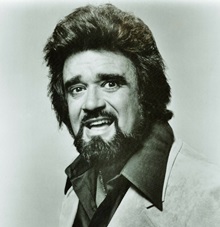
1995 – Robert Smith (better known as Wolfman Jack) died from a heart attack at the age of 57.
Younger people might remember him as the regular announcer and occasional host for The Midnight Special. Those a little older may recall him for his role in American Graffiti.
But anyone growing up in the 1960s will remember when Smith developed his famous alter ego Wolfman Jack on powerful Mexican stations with signals as large as 250,000 watts – five times the U.S. limit – and began to dominate the rock and roll airwaves. With that high-powered signal, he was picked up all over North America, and at night as far away as Europe and the Soviet Union.
At his peak, Wolfman Jack was heard on more than 2,000 radio stations in 53 countries.
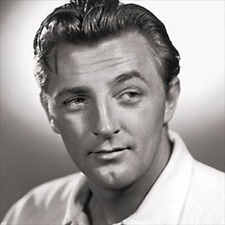
1997 – Actor Robert Mitchum died of lung cancer and emphysema at the age of 79.
He radiated rugged strength – sometimes as the good guy, other times a (very) bad guy – in more than 100 movies.
Mitchum’s first major role, as a dedicated infantry officer in The Story of G.I. Joe, won him an Academy Award nomination for Best Supporting Actor.
Other well-known films include Out of The Past, The Night of The Hunter, Heaven Knows, Mr. Allison, The Sundowners, Ryan’s Daughter, The Longest Day, and the original Cape Fear.
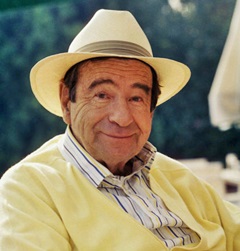
2000 – Academy Award winning actor Walter Matthau died of a heart attack at the age of 79.
He won the Academy Award for Best Supporting Actor for his performance in The Fortune Cookie, but is perhaps best known for his frequent collaborations with fellow actor Jack Lemmon (The Odd Couple, Grumpy Old Man and Grumpier Old Men.
In addition to his well-documented success in comedy films – no, I didn’t forget The Sunshine Boys or The Bad News Bears – Matthau was equally as well received in dramatic roles (The Kentuckian, Fail Safe, Mirage, Charley Varrick, and The Taking of Pelham One Two Three).
Broadway hits turned into films cast Matthau in lead roles in Hello, Dolly!, Cactus Flower, and Plaza Suite.
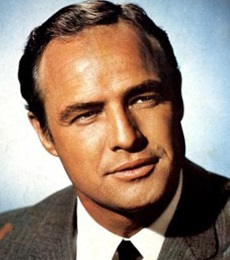
2004 – Marlon Brando, two-time Academy Award winning actor, died of respiratory failure from pulmonary fibrosis with congestive heart failure. He was 80.
At the age of twenty-three, Brando became the toast of Broadway for his performance as Stanley Kowalski in A Streetcar Named Desire. He reprised the role in the film version and earned his first Academy Award nomination in the Best Actor category. Although he was nominated again for Viva Zapata!, it was his stunning performance in On The Waterfront that saw him finally win the Oscar for Best Actor.
He remained a top box office draw in films such as The Wild One, Sayonara, Julius Caesar, Mutiny On The Bounty, Apocalypse Now, Last Tango In Paris, and The Godfather, which earned him his second Best Actor Academy Award.
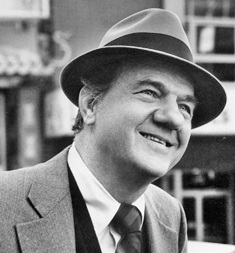
2009 – Academy Award winning actor Karl Malden died of natural causes at the age of 97.
Malden built a six-decade Hollywood career playing heroes and heavies – and, often, relatable ordinary men.
In a movie career that flourished in the 1950s and ’60s, Malden played a variety of roles in more than 50 films, including the sympathetic priest in On The Waterfront, the resentful husband in Baby Doll, the warden in Birdman of Alcatraz, a pioneer patriarch in How The West Was Won, the card dealer in The Cincinnati Kid, and Gen. Omar Bradley in Patton.
He received the Academy Award for playing Mitch in A Streetcar Named Desire.
Malden was a longtime holdout on television roles until he agreed to play Lt. Mike Stone on the police drama The Streets of San Francisco.. It ran from 1972 to 1977 and earned him four consecutive Emmy nominations.
For more than 20 years, Malden was the spokesman for American Express travelers checks who turned “Don’t leave home without them” into a national catchphrase in a series of commercials that debuted in 1973.
Karl Malden was, in the words of former Los Angeles Times film critic Charles Champlin, “an Everyman, but one whose range moved easily up and down the levels of society and the IQ scale, from heroes to heavies and ordinary, decent guys just trying to get along.”
Compiled by Ray Lemire ©2023 RayLemire.com. / Streamingoldies.com. All Rights Reserved.